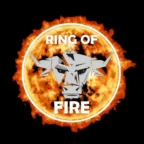How it started
Satoshi Radio has quite a history on the Lightning Network. At the beginning of 2020, we set up our Lightning node: the Satoshi Radio Lightning Node 1. We were in the fortunate position of having multiple experienced node operators in our group, who guided us through the process. Special mention goes out to lightning.watch (who provided us with initial external capacity) and Jorijn (who helped us to build the donation bot on Telegram).






